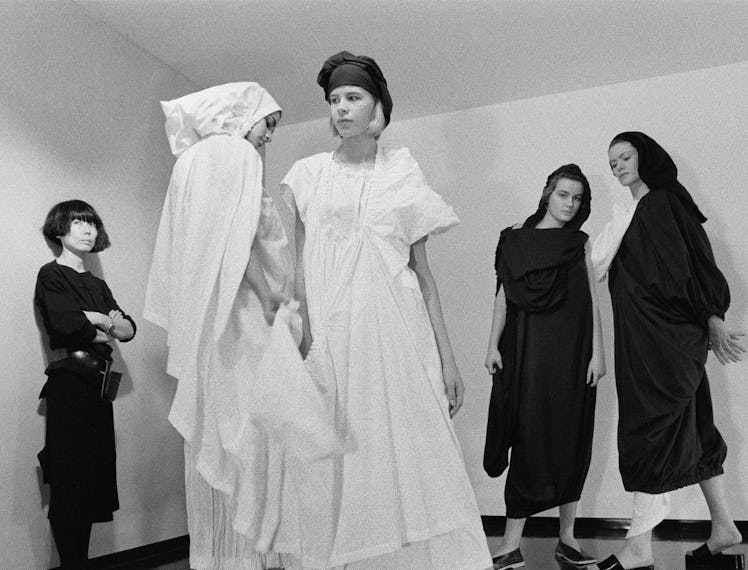Vivienne Westwood! Rei Kawakubo! Inside the Costume Institute’s ‘Women Dressing Women’

During the preview for The Costume Institute’s latest exhibition “Women Dressing Women” at The Metropolitan Museum of Art, guests wore their favorite female designers while gushing about seeing the rarest of the rare from some of the most powerful women in fashion. Think: a red Vivienne Westwood windowpane suit with a mini tartan bustle from the autumn 1994-95 collection, a gingham Comme des Garçons floor-length dress from the spring/summer 1997 “Body Meets Dress - Dress Meets Body” collection, and a mini brown-and-yellow skirt suit designed by Betsey Johnson for the psychedelic New York boutique Paraphernalia—the latter of which was once worn by “Baby” Jane Holzer.
All this and much more constituted the show, which will open on December 7 and run through March 3, 2024. “We aspire to dispel the stereotypes that women are less practical than men, or that they all design with themselves in mind,” Mellissa Huber, associate curator of The Costume Institute, said during the morning presentation. “Instead, we’re sharing the range of eclecticism, and the creativity in business acumen.” That ingenuity was on display from designers who worked many years before Vivienne and Betsey were on the fashion circuit. There was a black silk dress created by Madame Charlotte, designer of the House of Premet—which, according to the exhibition, predates Chanel’s infamous Little Black Dress by 36 months. A crepe de chine frock in the palest shade of baby pink showed the genius of Augusta Bernard, a 1930s designer who pioneered a new kind of bodycon and favored clean lines and asymmetry over the decadent surface embellishment that was popular at the time. And then there was the incredible silk chiffon and ivory embroidered dress covered in metal lamé and polychrome silk flowers—its unique, slightly pannier shape like something straight out of a royal court fantasy. Designed by Boué Soeurs (a brand founded by sisters Sylvie Montégut and Jeanne d’Etreillis) in 1928, the duo was heavily inspired by French Rococo artists from the 18th century.
With over 80 objects from 70 different designers, the exhibition is small but mighty—and tightly curated. It’s presented in a mostly linear timeline, and broken down into four different categories: anonymity, visibility, agency, and absence/omission. The show opens with an examination of visibility for female designers and the autonomy a career in fashion has provided throughout history. It also delves into timely topics like generational shifts and new kinds of opportunities for women designers, then finishes by tackling designers whose work only recently received mainstream recognition and credit. Ann Lowe, the groundbreaking Black designer who created Jacqueline Bouvier’s wedding dress for her wedding to John F. Kennedy in 1953, is one of the notable names included in the final bit of “Women Dressing Women.”
Claire McCardell, a pioneer of American fashion whose works are on view in “Women Dressing Women,” wearing her “Future Dress,” 1945.
While the legends of female fashion were all there, there was also room for newcomers in the show. Take for instance, Hillary Taymour of Collina Strada, who has a design in the exhibition displayed in a wheelchair (worn by Aaron Rose Philip in the fall 2021 Collina Strada runway show; Philip also helped co-design the mannequin). There’s also size-inclusive label Ester Manas, which displayed a sheer ruffled dress in a non-sample size. Both are fairly unprecedented, especially in the context of a fashion exhibition at a major art institution.
The show pulled deep from the expansive permanent collection of The Costume Institute, focusing primarily on Western fashion history. At a time when discourse surrounding white male creative directors ruling high fashion has reached a fever pitch, “Women Dressing Women” feels more pertinent than ever. “An idea we hope viewers will take away is the plurality of conceptual approaches, working methodologies, and distinctive voices that women have brought and continue to bring to the field,” Huber said.
Women Dressing Women is on view December 7, 2023–March 3, 2024 at The Metropolitan Museum of Art.